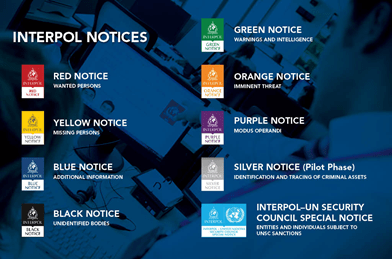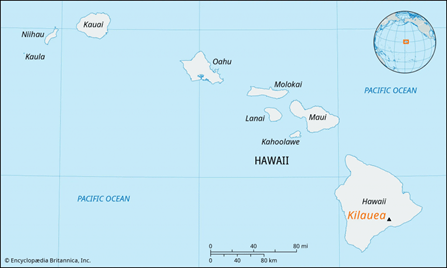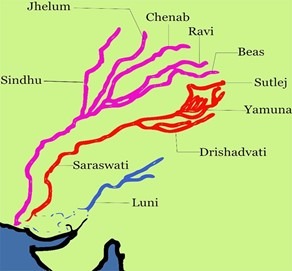Veer Savarkar
Syllabus: GS1/Modern History
Savarkar Jayanti (May 28)
- Honouring the Legacy of Veer Savarkar (1883–1966)
About Vinayak Damodar Savarkar:
- Revolutionary freedom fighter, writer, poet, and political thinker.
- Advocated for armed struggle to end British rule.
- Founded Abhinav Bharat (1904) while at Fergusson College, Pune.
- Established Free India Society in London; authored The First War of Independence on the 1857 revolt.
- Arrested in 1910; sentenced to 50 years in Cellular Jail, Andaman.
- Released in 1937; became president of Hindu Mahasabha (served ~7 years).
- Actively campaigned against untouchability.
- Dissolved Abhinav Bharat in 1951; focused on Hindu nationalist ideology.
About Hindu Mahasabha:
- Founded: 1915, Haridwar (Kumbh Mela) by Madan Mohan Malviya.
- Purpose: Counterbalance to Muslim League’s growing political influence.
Goals:
- Unite Hindus politically and culturally
- Promote Hindu religious and social causes
- Protect Hindu interests in governance, education, and employment
With reference to the political ideology of Veer Savarkar, consider the following statements:
- He considered untouchability a social evil and actively worked to eradicate it.
- He believed Hindu identity was primarily religious rather than cultural.
- He conceptualized Hindutva as a cultural and political unifying force.
Which of the statements given above are correct?
A) 1 and 2 only
B) 2 and 3 only
C) 1 and 3 only
D) All of the above
Answer: C
Explanation:
- Savarkar opposed untouchability and campaigned against it → 1 is correct.
- He emphasized cultural and national aspects of Hindu identity over purely religious ones → 2 is incorrect.
Njattadi Festival
Syllabus: GS1/Culture
Context:
- Kerala’s Agriculture Minister inaugurated the annual Njattadi Festival, also known as the Sapling Festival.
About the Festival:
- A traditional agricultural celebration observed by farming communities in Kerala.
- The name “Njattadi” is derived from “Njattuvela”, a period in the Malayalam calendar deemed ideal for paddy sowing.
- Marks the onset of the paddy cultivation season in the state.
Cultural Significance:
- Celebrated with folk songs like Vanchipattu and Njattu Pattu.
- Includes traditional dance performances, reflecting the agrarian heritage of Kerala.
Consider the following statements regarding Njattadi Festival:
- It is celebrated during the post-monsoon harvest season.
- It is accompanied by folk performances like Vanchipattu and Njattu Pattu.
- It is a pan-India agricultural festival celebrated for wheat sowing.
Which of the above is/are correct?
A. 1 and 2 only
B. 2 only
C. 1 and 3 only
D. All of the above
Answer:B.2only
Explanation: Statement 1 is incorrect – Njattadi occurs during sowing, not harvest. Statement 3 is incorrect – it is a regional (Kerala-specific) paddy festival, not related to wheat or pan-India observance.
Defence Minister Approves AMCA Fighter Jet Execution Model
Syllabus: GS3/Defence
Context:
- Defence Minister Rajnath Singh has approved the execution framework for the development of the Advanced Medium Combat Aircraft (AMCA), a key milestone in India’s indigenous aerospace capability.
About the AMCA Programme:
- Executing Agency: Aeronautical Development Agency (ADA), under the Ministry of Defence.
- Manufacturing Model: Competitive execution model with Hindustan Aeronautics Limited (HAL) and private sector players eligible to participate independently or in joint ventures/consortia.
- Eligibility: Bidding entities must be Indian companies compliant with national laws.
- Key Features of AMCA: Type: 5th-generation twin-engine stealth multirole fighter aircraft.
- Weight Class: 25 tonnes. Approval: Cleared by the Cabinet Committee on Security (CCS) in 2024.
- Estimated Cost: ₹15,000 crore. Design Status: Completed. Prototype Timeline: Expected by 2028–29.
- Production Timeline: Commencing 2032–33. Induction Goal: Targeted for operational deployment by 2034.
- Strategic Significance: Aatmanirbharta in Defence: Reinforces India’s commitment to self-reliance in critical military technologies.
- Geopolitical Imperatives: Responds to increasing regional threats, particularly following Operation Sindoor and enhanced China-Pakistan strategic cooperation.
- Air Superiority & Tech Parity: AMCA is critical to achieving long-term air dominance and narrowing the technological gap with adversarial forces.
- Global Standing: Upon successful induction, India would join a select group of nations possessing indigenous fifth-generation fighter capability.
With respect to the development timeline of AMCA, arrange the following in chronological order:
- Start of production
- Completion of design phase
- Deployment into Indian Air Force
- Roll-out of prototype
Choose the correct sequence:
A. 2 – 4 – 1 – 3
B. 4 – 2 – 1 – 3
C. 2 – 1 – 4 – 3
D. 2 – 4 – 3 – 1
Answer:A
Explanation: Design is complete → prototype roll-out by 2028-29 → production starts by 2032-33 → induction by 2034. It involved conceptualization, engineering design, stealth shaping, radar cross-section optimization, and wind tunnel testing. The first physical prototype is expected to be built and revealed during this period. This stage includes building a full-scale test aircraft for evaluation, ground testing, and limited flight trials.
RoDTEP scheme
Syllabus :GS 3/Economy
- The Government of India has reinstated benefits under the Remission of Duties and Taxes on Exported Products (RoDTEP) scheme for three key categories: Advance Authorization (AA) holders, Export-Oriented Units (EOUs), and Special Economic Zone (SEZ)
- These benefits will apply to all eligible exports made from 1st June 2025
About the RoDTEP Scheme:
- Launch: January 2021
- Objective: To reimburse embedded taxes and duties on exported goods that were previously non-recoverable.
- Coverage: Includes Central, State, and local levies not refunded under any other scheme.
- WTO Compliance: Designed to align with World Trade Organization (WTO) norms by neutralizing domestic taxes on exports.
Implementation Mechanism:
- Fully digitalized and transparent.
- Benefits are disbursed in the form of transferable electronic duty credit scrips issued by the Central Board of Indirect Taxes & Customs (CBIC).
- Principle: Upholds the global trade norm that exported products should not carry the burden of domestic taxes.
With reference to the RoDTEP scheme, consider the following statements:
- The scheme allows reimbursement of both refundable and non-refundable duties and taxes incurred during the production and export of goods.
- It is compliant with the provisions of the WTO Agreement on Subsidies and Countervailing Measures.
- The electronic scrips issued under the scheme are non-transferable and can only be used by the original exporter.
- The benefits under the scheme were initially not available to SEZ units and EOUs.
Which of the statements given above is/are correct?
A. 1 and 2 only
B. 2 and 4 only
C. 1, 2, and 3 only
D. 2, 3, and 4 only
Answer:B
Explanation:
- Statement 1 is incorrect: RoDTEP only refunds previously non-refundable embedded taxes and duties, not those that are already refundable.
- Statement 2 is correct: The scheme was designed in compliance with WTO norms.
- Statement 3 is incorrect: The scrips are transferable.
- Statement 4 is correct: SEZs, EOUs, and AA holders were initially excluded but were later included (from June 1, 2025).
Stingless Bees
Syllabus: GS3/ Environment
- A recent study highlights that stingless bees can enhance crop and vegetable yields by up to 29%, offering a sustainable boost to agricultural productivity.
About Stingless Bees
- Stingless bees, though resembling honeybees, lack a functional sting and defend their nests primarily through biting.
- Like honeybees, they exhibit eusocial behavior—forming structured, perennial colonies composed of a queen, drones, and numerous worker bees.
- These bees are smaller in size compared to traditional honeybees and are native to tropical regions across India, Africa, Australia, and beyond.
- In India, they are predominantly found in the Northeastern, Southern, and Eastern states.
- Scientific domestication efforts for stingless bees began in Nagaland and have since expanded to states like Meghalaya and Arunachal Pradesh.
Significance
- Stingless bees contribute both ecologically and economically. They are efficient pollinators, significantly improving agricultural yields, while also producing medicinal honey valued for its therapeutic properties, offering farmers both productivity and income benefits.
Consider the following statements regarding stingless bees:
- They possess a functional sting but rarely use it for defense.
- They exhibit eusocial behavior with distinct castes such as queen, drones, and workers.
- They are scientifically domesticated in parts of Northeast India like Nagaland and Arunachal Pradesh.
Which of the statements given above are correct?
A) 1 and 2 only
B) 2 and 3 only
C) 1 and 3 only
D) 1, 2, and 3
The correct answer is: B) 2 and 3 only
Explanation:
- Statement 1: They possess a functional sting but rarely use it for defense.
This is incorrect. Stingless bees, as their name suggests, do not have a functional sting. Instead of stinging, they defend their nests by biting attackers. - Statement 2: They exhibit eusocial behavior with distinct castes such as queen, drones, and workers.This is correct. Stingless bees are eusocial insects, living in organized colonies with queens, drones (males), and worker bees.
- Statement 3: They are scientifically domesticated in parts of Northeast India like Nagaland and Arunachal Pradesh.This is correct. Scientific domestication of stingless bees has been carried out in Nagaland and extended to Meghalaya and Arunachal Pradesh.
Interpol Issues 2 Silver Notices
Syllabus: GS3/ Internal security
Context:
- The Central Bureau of Investigation (CBI) announced that Interpol has issued its first two Silver Notices against individuals wanted by India.
About Interpol:
- Interpol, officially the International Criminal Police Organization, is an intergovernmental agency founded in 1923 at the International Police Congress in Vienna as the International Criminal Police Commission (ICPC). It adopted the name Interpol in 1956. With 196 member countries, including India, Interpol is headquartered in Lyon, France. It serves as the world’s largest organization dedicated to facilitating global police cooperation through its mandate and technical infrastructure for sharing crime-related information internationally.

Governance Structure:
- The General Secretariat, led by the Secretary General, manages daily operations to combat various crimes and is staffed by both police officers and civilians. The General Assembly, Interpol’s governing body, meets annually to make strategic decisions. Each member country hosts a National Central Bureau (NCB), staffed by national police officials and typically located within the government ministry responsible for policing, serving as the central contact point for Interpol’s global network.
India and Interpol:
- India joined Interpol in 1949. The CBI functions as India’s NCB, coordinating international police cooperation through Interpol channels. India hosted the 90th Interpol General Assembly in Delhi in 2022, during which Interpol released its first global crime trend report.
Interpol Notices:
- Interpol Notices are international alerts issued by the General Secretariat at the request of member countries’ NCBs. These notices facilitate cooperation by sharing critical crime-related information among member states.
Silver Notices:
- Introduced in January 2025 during a pilot phase involving 51 countries and territories, the Silver Notice is a new color-coded alert focused on tracking assets linked to wanted criminals worldwide. Each participating country is permitted to publish up to nine Silver Notices under this program
Consider the following statements about Interpol:
- Interpol was originally established as the International Criminal Police Commission (ICPC).
- The General Assembly of Interpol meets biennially to decide its policies and governance.
- The National Central Bureau (NCB) in each member country acts as the main liaison between the country’s law enforcement and Interpol’s General Secretariat.
- India’s Central Bureau of Investigation (CBI) functions as the NCB for Interpol in India.
Which of the statements given above are correct?
A) 1, 2 and 3 only
B) 1, 3 and 4 only
C) 2, 3 and 4 only
D) All of the above
Answer: B) 1, 3 and 4 only
Explanation:
- Interpol was originally established as the International Criminal Police Commission (ICPC).
- Interpol was founded in 1923 as the International Criminal Police Commission (ICPC) before it adopted the name Interpol in 1956.
- The General Assembly of Interpol meets biennially to decide its policies and governance.
- The General Assembly is Interpol’s supreme governing body, but it meets annually, not biennially.
- The National Central Bureau (NCB) in each member country acts as the main liaison between the country’s law enforcement and Interpol’s General Secretariat.
- The NCB serves as the crucial point of contact, facilitating cooperation and communication between Interpol and national law enforcement.
- India’s Central Bureau of Investigation (CBI) functions as the NCB for Interpol in India.True. The CBI is designated as the NCB for India, coordinating all Interpol-related activities within the country.
Kilauea Volcano
Syllabus: GS1/ Physical Geography
Context
- The Kilauea volcano on Hawaii’s Big Island has emitted lava fountains exceeding 1,000 feet in height, marking its 23rd eruption episode since December 2024.

About Kilauea
- Kilauea is one of six active volcanoes in the Hawaiian Islands and is classified as a shield volcano, characterized primarily by effusive lava flows rather than explosive eruptions.
- Situated within Hawaii Volcanoes National Park alongside Mauna Loa—the world’s largest volcano—Kilauea is smaller but notably more active.
- It has maintained frequent eruptive activity since 1983, attracting continuous scientific and public attention.
Consider the following statements about the Kilauea volcano:
- Kilauea is a stratovolcano known for explosive eruptions.
- It is located within the Hawaii Volcanoes National Park alongside Mauna Loa.
- Kilauea has been erupting almost continuously since the early 1980s.
- Mauna Loa is the largest volcano on Earth by volume.
Which of the statements given above are correct?
A) 1, 2, and 3 only
B) 2, 3, and 4 only
C) 1, 3, and 4 only
D) All of the above
Answer: B) 2, 3, and 4 only
Explanation:
- Statement 1 is incorrect because Kilauea is a shield volcano, not a stratovolcano, and is known for effusive lava flows, not explosive eruptions.
- Statement 2 is correct; Kilauea and Mauna Loa are both located within Hawaii Volcanoes National Park.
- Statement 3 is correct; Kilauea has been erupting frequently and continuously since 1983.
- Statement 4 is correct; Mauna Loa is the largest volcano on Earth by volume.
Quality Council of India (QCI)
Syllabus:Economy
- The Quality Council of India (QCI) is an autonomous national accreditation body established to ensure quality assurance in products, services, and processes across various sectors through independent third-party assessments.
Establishment and Administration:
- Founded in 1996 following recommendations from an EU Expert Mission and extensive inter-ministerial consultations.
- It operates under the Ministry of Commerce and Industry, specifically the Department for Promotion of Industry and Internal Trade (DPIIT).
- Headquarters: World Trade Centre (WTC), New Delhi.
Objectives:
- Promote adoption and implementation of quality standards in both public and private sectors.
- Provide independent accreditation and third-party assessments to uphold quality.
- Improve quality of life and public service delivery by enhancing governance standards.
- Act as the nodal agency for implementing National Quality Campaigns aligned with global best practices.
Structure and Governance:
- Operates on a Public–Private Partnership (PPP) model involving government and key industry associations such as CII, FICCI, and ASSOCHAM.
- Registered under the Societies Registration Act, 1860.
- Governed by a Council of 39 members representing government, industry, and other stakeholders equally.
- The Chairperson is appointed by the Prime Minister of India.
Key Functions:
- Accreditation Services: Through specialized bodies like NABL (labs), NABH (healthcare), NABET (environment), and NBQP, QCI ensures quality standards across sectors.
- Third-Party Assessments: Conducts independent evaluations of services, infrastructure, and government schemes.
- Policy Support: Facilitates implementation of quality mandates under flagship programs such as Swachh Bharat and Ayushman Bharat.
- Capacity Building: Trains auditors and personnel for quality improvement initiatives.
- Global Alignment: Collaborates internationally to align India’s quality ecosystem with WTO standards and global benchmarks.
Consider the following statements about the Quality Council of India (QCI):
- QCI was established as a statutory body under the Ministry of Commerce and Industry.
- It operates on a Public-Private Partnership (PPP) model involving government and industry associations like CII, FICCI, and ASSOCHAM.
- The Chairperson of QCI is nominated by the Prime Minister of India.
- QCI is responsible for accreditation through bodies such as NABL, NABH, and NABET.
Which of the above statements is/are correct?
A) 1 and 2 only
B) 2, 3 and 4 only
C) 1, 3 and 4 only
D) All of the above
Answer:B
Explanation:
- QCI is an autonomous body registered under Societies Registration Act, not a statutory body (statement 1 incorrect).
- It operates under a PPP model (2), Chairperson is PM-nominated (3), and it handles accreditation through NABL, NABH, NABET etc. (4).
Saraswati Pushkaralu
Syllabus: GS1/ Culture
- The 11th day of the ongoing Saraswati Pushkaralu witnessed a massive influx of pilgrims at Kaleshwaram, marking a significant spiritual gathering.
About Saraswati Pushkaralu:
- Saraswati Pushkaralu, also known as Saraswati Pushkaram, is a sacred Hindu river festival that is celebrated once every 12 years. The timing of the festival is astronomically determined—it coincides with the entry of the planet Jupiter (Brihaspati) into the Gemini zodiac sign (Mithuna Rasi).
- The festival spans 12 days, beginning precisely from the moment Jupiter transitions into Mithuna Rasi. It is dedicated to the revered and mystical River Saraswati, often referred to as Antarvahini—the invisible river believed to flow beneath the Triveni Sangam.

Significance of Kaleshwaram:
- Kaleshwaram becomes a focal pilgrimage destination during this period. It is believed to be the meeting point (Triveni Sangam) of three rivers:
- Godavari
- Pranahita
- Saraswati (the subterranean and spiritual river)
- Devotees flock to Kaleshwaram during Saraswati Pushkaralu to offer prayers, perform rituals, and take holy dips, seeking spiritual purification and divine blessings.
Consider the following statements with respect to the Saraswati Pushkaralu festival:
- The festival is celebrated every 12 years, based on the movement of Saturn into the Gemini constellation.
- It is associated with the Triveni Sangam where the rivers Godavari, Krishna, and the invisible Saraswati are believed to meet.
- The river Saraswati, though not visible, holds sanctity in Hindu tradition and is often invoked in rituals.
Which of the statements given above is/are correct?
A. 1 only
B. 3 only
C. 1 and 2 only
D. 2 and 3 only
Answer:B
Explanation:
- Statement 1 is incorrect: It is Jupiter (Brihaspati) entering Gemini (Mithuna), not Saturn.
- Statement 2 is incorrect: The Triveni Sangam at Kaleshwaram involves Godavari, Pranahita, and Saraswati, not Krishna.
- Statement 3 is correct: Saraswati is considered Antarvahini (invisible but sacred), often invoked in religious rites.
